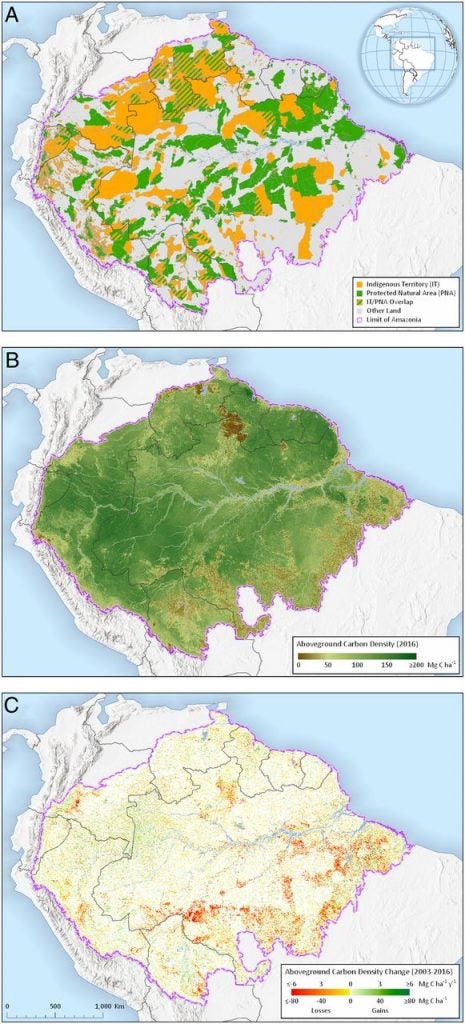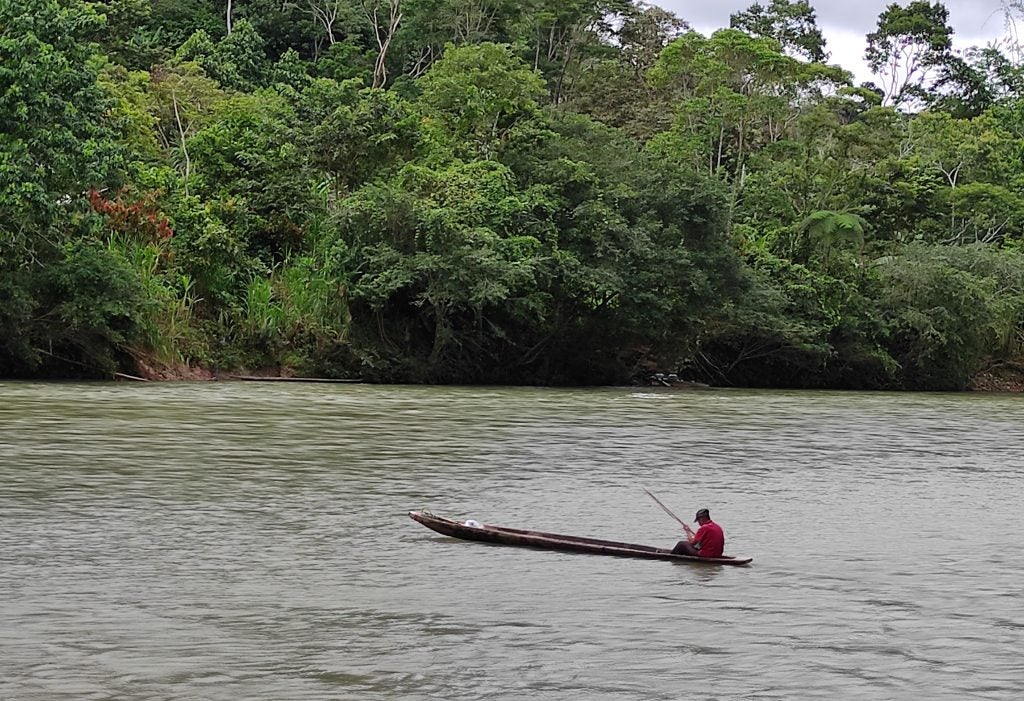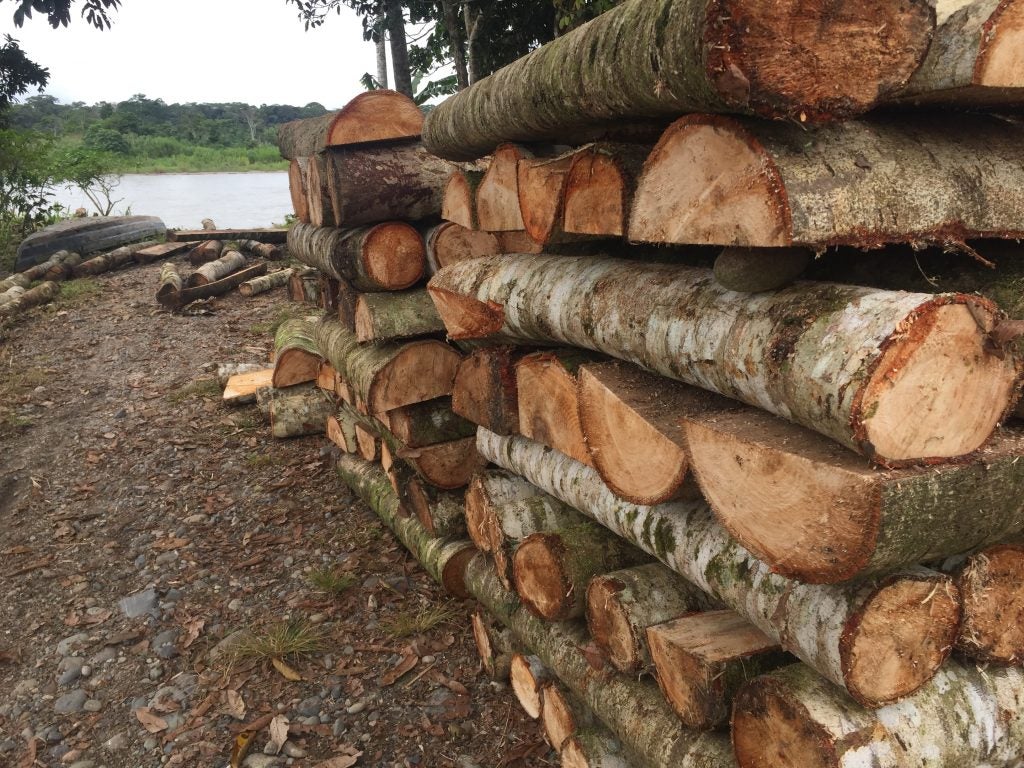This post was coauthored by Bärbel Henneberger.
Indigenous communities living in the Amazon rainforest are known as the ‘guardians of the forest’ because of their effectiveness in keeping forests intact. Indigenous territories and protected areas, which cover 52 percent of the Amazon and store 58 percent of the carbon, outperform surrounding lands in terms of storing carbon and limiting net carbon emissions, according to a study published in the Proceedings of the National Academy of Science earlier this year.
But now Indigenous territories and protected areas are under threat. Indigenous leaders in the Amazon are reporting increasing instances of a violation of their rights. Miners, ranchers and illegal loggers who encroach on protected Indigenous land face impunity, and are apparently encouraged by statements from political leaders and legislative efforts to open territorial land to new mining concessions.
Further, government concessions for oil extraction and mining overlap almost a quarter of all recognized territorial land, substantially increasing their vulnerability to adverse impacts.
COVID-19 is compounding these threats, as authorities haven’t been able to patrol nature preserves and Indigenous territories as often— a situation that criminal organizations and illegal loggers have been using to their advantage.
In another recent study, World Wildlife Fund Germany found that global rainforest deforestation more than doubled under cover of COVID-19. Around 6,500 square kilometers (2,510 square miles) of rainforest were felled in March alone. Evidence compiled by the University of Maryland found that deforestation rose by 150% this March compared to the 2017-2019 average for the same calendar month.
For example, in Ecuador, the country with the highest density of roads in the Amazon region, we recently observed trucks carrying tall trees cut from primary forest driving under the cover of darkness, with large piles of timber beside roads and riverbanks ready to be loaded into more trucks. The uptick in activity here was likely driven by the lack of environmental controls due to the pandemic.
A buffer against deforestation
The PNAS study accounted for links between Indigenous land management and avoided deforestation, as well as for gains and losses in carbon density from forest conversion, degradation and natural disturbances inside and outside Amazon protected lands. The study found that forest growth on Indigenous territories exhibit the lowest net loss of carbon compared to surrounding lands, and that 90 percent of net carbon emissions come from unprotected land.
These findings reinforce the importance of Indigenous territories and protected areas throughout the Amazon to mitigating climate change, and highlight the need to ensure continued protection of these areas especially in light of recent threats like COVID-19, forest fires, and weakened enforcement.

The Amazon Basin. Distribution (ca. 2016) of Indigenous Territories (orange) and Protected Natural Areas (green) across the nine-nation region contained within the biogeographic limit of the Amazon (dashed purple line) (A) relative to the amount and distribution of aboveground carbon stocks (ca. 2016) (B) and changes (2003 to 2016) in aboveground carbon stocks (C). Taken from Walker, W., et.al (2020) The role of forest conversion, degradation, and disturbance in the carbon dynamics of Amazon indigenous territories and protected areas.
A call to act now
Robinson López¹, a representative of the Inga people of the Colombian Amazon and former Climate Change and Biodiversity Coordinator of COICA, passed away on August 21, 2020 due to COVID-19. Before his untimely passing, he talked to us about the need to carry on the work of protecting Indigenous land. He made an urgent call to allies and national governments to do more to counter the threats facing Indigenous People.
“…Indigenous territories are widely affected during the pandemic, as there is an exponential increase of people entering our territories to do illegal logging, mining, cutting down and burning large forest areas. There are no controls by the State or guarantees for the communities and their authorities to carry out their territorial control. This increase in the arrival of strangers to our territories coincides with the increase in the infected Indigenous population in the Amazon”.
As of September 8th, 55,659 Indigenous People in the Amazon Basin had tested positive for COVID-19, and 1734 died.
More needs to be done
For now, Indigenous territories and protected areas continue to resist the expansion of deforestation that occurs beyond their borders. But more needs to be done. This includes strengthening the rights of Indigenous Peoples, whose lands cover 30 percent of the Amazon and possess 34 percent of its carbon. And also, improving access to climate funds that would compensate Indigenous communities for conserving the forests.
Importantly, governments and climate funds must ensure the highest environmental and social standards and safeguards, which was something López was fighting for as part of COICA.
López had described to us the need to respect the Indigenous Amazonian knowledge systems for environmental and territorial protection.
“To reduce the degradation of ecosystems in the Amazon, the territorial rights of the Indigenous Peoples over our ancestral territories must be recognized and guaranteed; likewise, respect for collective rights and the fundamental right of Free and Informed Consultation and Consent is essential to avoid and remedy the impact of multiple projects and laws that affect and encourage degradation and deforestation in the Amazon,” said López.
López’ legacy, and that of countless others fighting to protect Indigenous lands, serves as a reminder that ensuring Indigenous territorial control is one of the most important strategies to maintain the forests, and mitigate impacts of COVID-19 in Indigenous territories in the Amazon, for people and the environment.
Note:
The study “The role of forest conversion, degradation, and disturbance in the carbon dynamics of Amazon indigenous territories and protected areas“, was published by a consortium, comprised of scientists, policy experts and Indigenous leaders from the Woods Hole Research Center, the Amazon Network of Georeferenced Socio-environmental Information, the Coordinator of Indigenous Organizations of the Amazon Basin, and the Environmental Defense Fund, that is, implementing a 5-year project titled “Amazonian Indigenous Territories: Recognizing and Responding to Risks From Forest Loss.” Supported by the Norwegian Agency for Development Cooperation, this project focuses on predicting and quantifying risks to Indigenous territories and the ecosystem services they provide from the drivers of forest loss. The project is also focused on reducing these risks while advancing Indigenous rights and interests through targeted advocacy of external actors at local to national levels.
¹Robinson López passed away on August 21, 2020 due to COVID-19. As the Climate Change and Biodiversity Coordinator for COICA, Mr. López was a tireless advocate for Indigenous rights and forest protection. You can find a link to the full interview with Robinson López here.
Aware of the important role that Indigenous People play in protecting forests and maintaining the carbon in standing forests, especially in the tropics, Environmental Defense Fund advocates for Indigenous People to have improved access to climate funds, aims to ensure that the highest environmental and social standards and safeguards are upheld, and supports COICA in this project and beyond on their efforts to make visible the role of Indigenous People in climate change mitigation.











